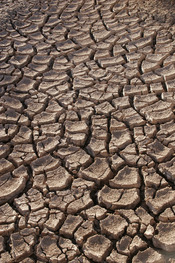Between the 300 A.D. and 900 A.D. the Mayan civilisation flourished in Central America south Mexico. Around 900 A.D., the Mayans left their stone palaces and abandoned their cities until finally they disappeared entirely by 1000 A.D. It is said that there could be many reasons for the disappearance or decline of the Mayan civilisation. There are many theories concerning the disappearance of which some include epidemic diseases, a mega-drought or a peasant revolt or revolution. There is a great deal of scientific and archaeological evidence that supports each theory but no theory can be definite.
One of the largest theories concerned with the disappearance of the Mayan population is the occurrence of a mega-drought in the Central America region. The drought theory suggests that 200 year drought occurred in the area, which caused the lack of agricultural water or water for drinking. This in turn caused the death of the Mayan population as they relied heavily on rainwater due to the fact that there were no fresh water sources in the area near the Mayan cities.
Scientific climatic modelling, tree ring data and historical climate data undertaken by Richard Gill show that a large drought or series of droughts occurred between 800 A.D. and 1000 A.D., precisely when the disappearance occurred. However during this drought, only the southern Mayan cities were abandoned while the northern cities continued to exist. This however can be explained as northern cities had access to seafood which probably enabled them to survive without water for agriculture.
Another theory suggests that the Mayan civilisation collapsed by a revolt on the priest rulers by the lower Mayan social classes. Mayan peasants at the time were constantly building new buildings and making other buildings bigger. The increased burden of work may have caused people to abandon...


